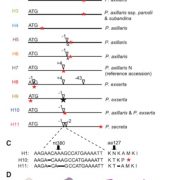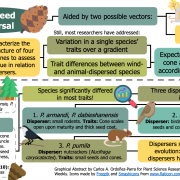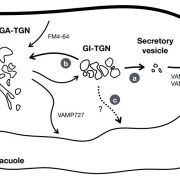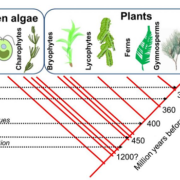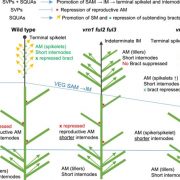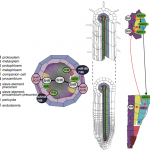How Marchantia polymorpha avoids bug bites (bioRxiv)
 Plants took hundreds of million years to evolve from aquatic to land environments. Biotic and abiotic stress adaptation contributed to the transition. In this preprint, Romani et al. elucidated functions of the transcription factor CLASS I HOMEODOMAIN LEUCINE-ZIPPER (C1HDZ) in the early land plant Marchantia polymorpha. Despite having all the conserved protein motifs of other members of this family, MpC1HDZ does not seem to contribute to abiotic stress tolerance whereas C1HDZ genes in flowering plants are known to regulate abiotic stress responses. Interestingly, knocking out MpC1HDZ greatly decreased oil body numbers, and transcriptome analyses of the mutants showed that majority of the down-regulated genes were associated with secondary metabolism. Moreover, the mutants with early stop codons (e.g. Mpc1hdz-1ge) were preferred by starved pill bugs, a terrestrial isopod, and thallus extract of the mutants showed decreased antibiotic activity against Bacillus subtilis. This study shows genetic evidence in support of the century-old hypothesis that liverwort oil bodies function in defense against arthropod herbivores. Lastly, the authors propose an oil body cell differentiation model that is mediated by MpC1HDZ expression. (Summary by Yun-Ting Kao) bioRxiv 10.1101/2020.03.02.971010
Plants took hundreds of million years to evolve from aquatic to land environments. Biotic and abiotic stress adaptation contributed to the transition. In this preprint, Romani et al. elucidated functions of the transcription factor CLASS I HOMEODOMAIN LEUCINE-ZIPPER (C1HDZ) in the early land plant Marchantia polymorpha. Despite having all the conserved protein motifs of other members of this family, MpC1HDZ does not seem to contribute to abiotic stress tolerance whereas C1HDZ genes in flowering plants are known to regulate abiotic stress responses. Interestingly, knocking out MpC1HDZ greatly decreased oil body numbers, and transcriptome analyses of the mutants showed that majority of the down-regulated genes were associated with secondary metabolism. Moreover, the mutants with early stop codons (e.g. Mpc1hdz-1ge) were preferred by starved pill bugs, a terrestrial isopod, and thallus extract of the mutants showed decreased antibiotic activity against Bacillus subtilis. This study shows genetic evidence in support of the century-old hypothesis that liverwort oil bodies function in defense against arthropod herbivores. Lastly, the authors propose an oil body cell differentiation model that is mediated by MpC1HDZ expression. (Summary by Yun-Ting Kao) bioRxiv 10.1101/2020.03.02.971010
[altmetric doi=”10.1101/2020.03.02.971010″ details=”right” float=”right”]


